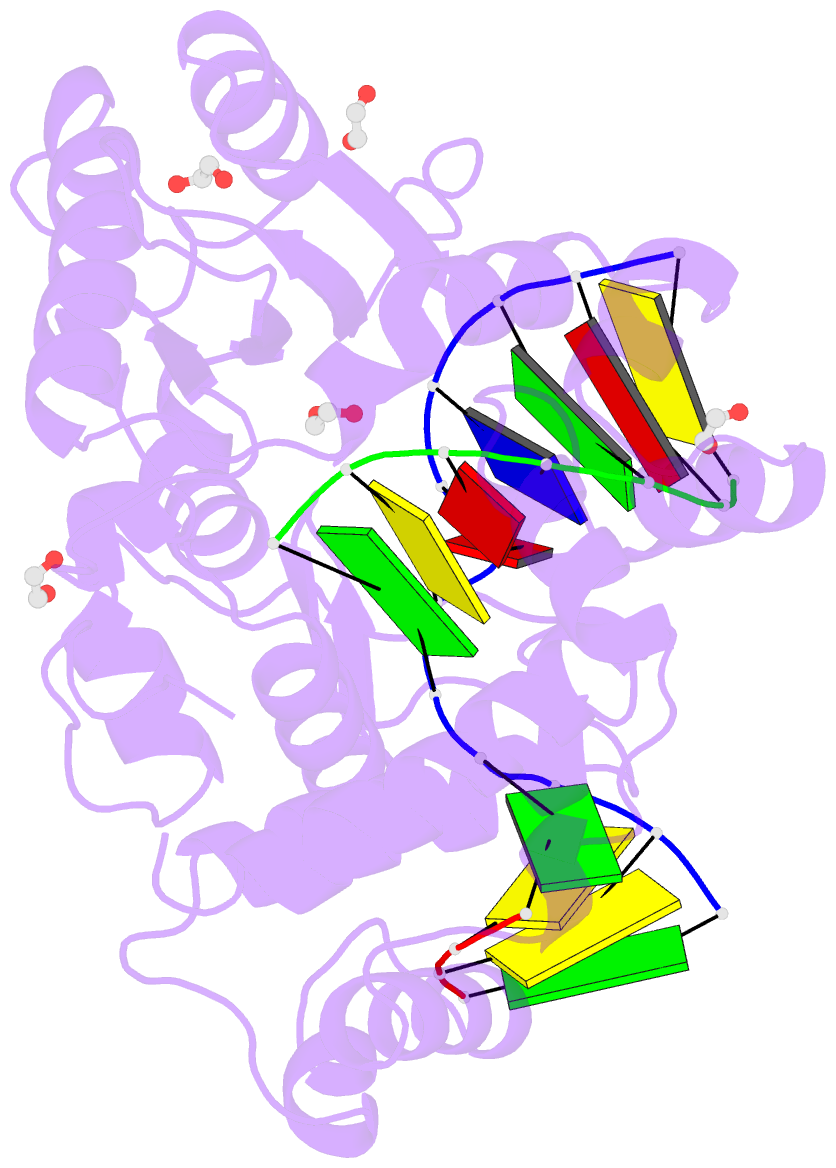Summary information and primary citation
- PDB-id
- 2bcr; SNAP-derived features in text and JSON formats;
DNAproDB
- Class
- transferase, lyase-DNA
- Method
- X-ray (1.75 Å)
- Summary
- DNA polymerase lambda in complex with a DNA duplex containing an unpaired damp
- Reference
- Garcia-Diaz M, Bebenek K, Krahn JM, Pedersen LC, Kunkel TA (2006): "Structural analysis of strand misalignment during DNA synthesis by a human DNA polymerase." Cell(Cambridge,Mass.), 124, 331-342. doi: 10.1016/j.cell.2005.10.039.
- Abstract
- Insertions and deletions in coding sequences can alter the reading frame of genes and have profound biological consequences. In 1966, Streisinger proposed that these mutations result from strand slippage, which in repetitive sequences generates misaligned intermediates stabilized by correct base pairing that support polymerization. We report here crystal structures of human DNA polymerase lambda, which frequently generates deletion mutations, bound to such intermediates. Each contains an extrahelical template nucleotide upstream of the active site. Surprisingly, the extra nucleotide, even when combined with an adjacent mismatch, does not perturb polymerase active site geometry, which is indistinguishable from that for correctly aligned strands. These structures reveal how pol lambda can polymerize on substrates with minimal homology during repair of double-strand breaks and represent strand-slippage intermediates consistent with Streisinger's classical hypothesis. They are thus relevant to the origin of single-base deletions, a class of mutations that can confer strong biological phenotypes.





